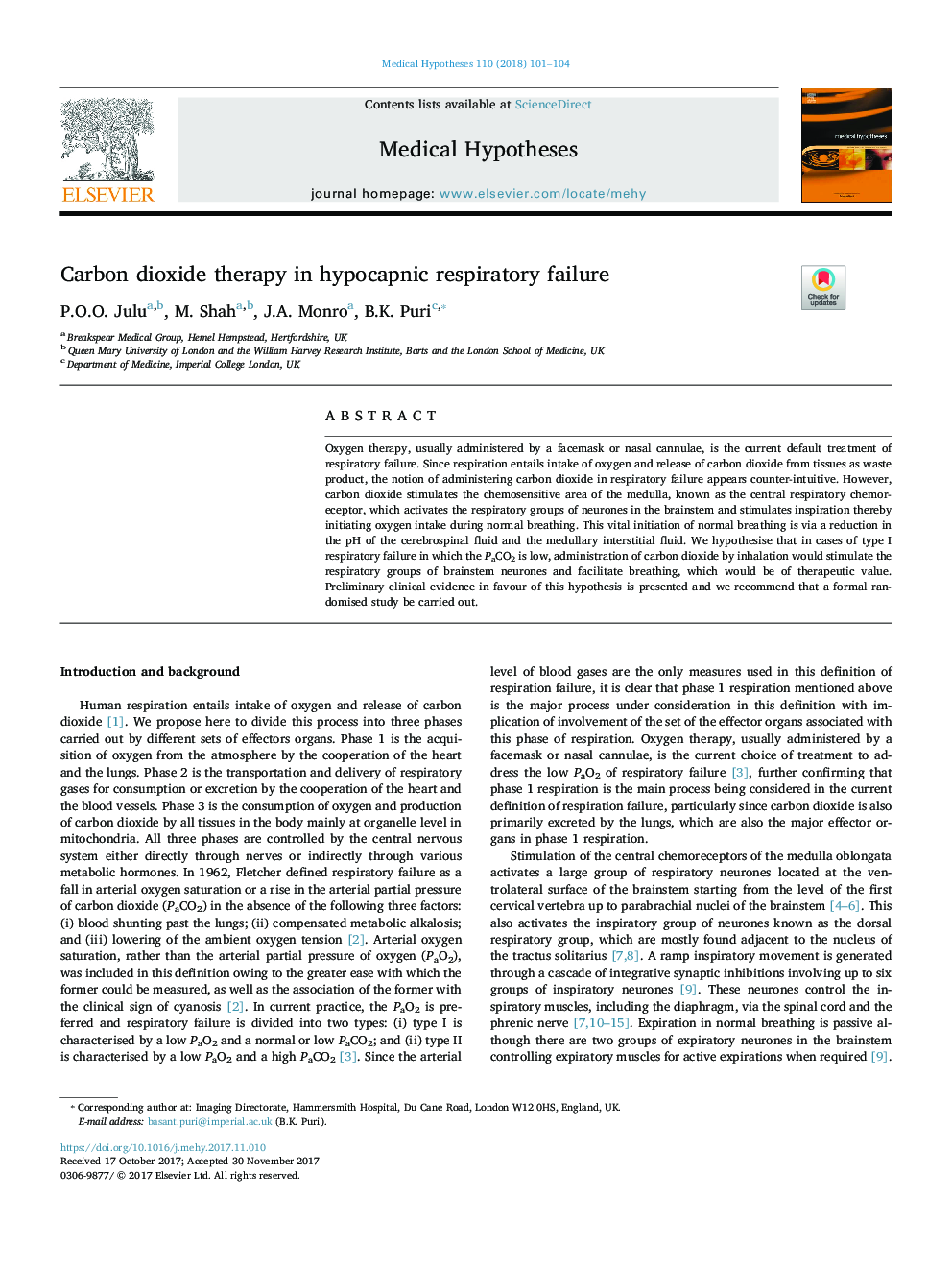| Article ID | Journal | Published Year | Pages | File Type |
|---|---|---|---|---|
| 8516108 | Medical Hypotheses | 2018 | 4 Pages |
Abstract
Oxygen therapy, usually administered by a facemask or nasal cannulae, is the current default treatment of respiratory failure. Since respiration entails intake of oxygen and release of carbon dioxide from tissues as waste product, the notion of administering carbon dioxide in respiratory failure appears counter-intuitive. However, carbon dioxide stimulates the chemosensitive area of the medulla, known as the central respiratory chemoreceptor, which activates the respiratory groups of neurones in the brainstem and stimulates inspiration thereby initiating oxygen intake during normal breathing. This vital initiation of normal breathing is via a reduction in the pH of the cerebrospinal fluid and the medullary interstitial fluid. We hypothesise that in cases of type I respiratory failure in which the PaCO2 is low, administration of carbon dioxide by inhalation would stimulate the respiratory groups of brainstem neurones and facilitate breathing, which would be of therapeutic value. Preliminary clinical evidence in favour of this hypothesis is presented and we recommend that a formal randomised study be carried out.
Related Topics
Life Sciences
Biochemistry, Genetics and Molecular Biology
Developmental Biology
Authors
P.O.O. Julu, M. Shah, J.A. Monro, B.K. Puri,
